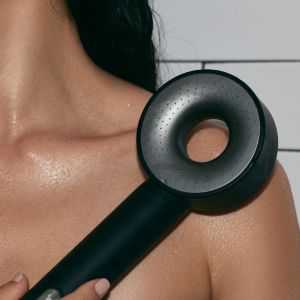To Bush or Not
By Jo Phillips
To Bush or not to Bush that is the question? trends come and go, tastes change, and fashions affect our beliefs. So where do we stand today as women regarding our public hair? Are we liberated and making choices for ourselves or are we still trimming shaping and cutting under the pressure of others?
Image on left by Pexels from Pixabay
Our pubic hair has a meaningful role, for female-identifying people but actually for some male-identifying people too. But the question does arise as to what we do and why? Also, how many of the decisions we make are our own or from peer pressure?
The stop in shaving to let hair coalesce into its natural form, as much as getting rid of any sign of public hair, leg hair and underarm hair is very much part of a body-positive, hair-positive movement that juxtaposes the silky skin, hairless ideals that have shaped very much the last few years approaches to bodily hair.
This simple choice can be interpreted in many a way. Is it a protest against the patriarchy? peer pressure? a defiant political statement? or even because of the use of plastic in many razors it’s an environmental act against plastic pollution?
For some women being fully shaved is shunned as it is associated with both pornography and child sexual abuse. Whilst for others it’s a liberation and a form of hygiene. For some it is a bush for others that term still sounds like it is deliverd by men and so prefer the staright talking words of public hair.
Whatever your current choice the story of public hair, lady gardens bushes or whatever term you feel comfortable with has a long history
From the earliest of days, hair removal has been a trend. The Egyptians pioneered the development of hair removal tools such as tweezers and razors whilst in the middle ages hair removal was slightly less common because there were more problematic things to deal with such as pestilence and plague.
However, in some regions, a fresh shave even became a symbol of prostitution, prompting women of higher classes to leave their hair natural.
Renaissance
The Renaissance era refocused on class and status, with a greater consensus that women’s pubic hair must go. One popular yet very scary hair technique involved boiling arsenic and quicklime and applying it to the hair. Women had to be careful to remove the solution not only after the hair had been burned away but before the flesh was burned, too.
Women who opted to keep their hair were viewed as overly masculine, and in some cases, filthy. Art and greater society had yet to shy away from the nude form, so quite personal choices became publicly scrutinized.
In the 1800s, “ideal femininity” involved cinched waists, long dresses, and submission. Class came into play again as some women of wealthier classes shaved their armpits, but most opted out. because of certain strict religious movements, conversations and attention toward anything of a sexual nature was very much avoided
Of course, there were some exceptions, in the 17th and 18th centuries, lovers would occasionally present locks of their pubic hair as souvenirs.
The 20th Century saw a paradigm shift. Legs and armpits were on show publically and the invention of a women’s razor meant hardcore rhetoric from producers to compel women to shave.
By the time the 1960s came along pretest was back in fashion and so was armpit hair which became a hallmark of activism and support for the Civil Rights and the antiwar movements.
In the 1970s electrolysis, an electric hair removal technique was born and by the mid-1990s, any remnants of pubic hair positivity from the ’60s had all but been erased. Being hair-free was an expectation, not a freedom of choice, an almost cultural pressure.
However, it is important to point out at this point, that these fashions to the bush or not to bush as such have been applied in main to women and products to aid removal or condition public hair have been made and sold to the female market. Yet its fair to say most men also have public hair, without having a plethora of products bombarded via the media at them and the social pressure on how they look after there is in no way reminiscent of the pressure put on female populations.
The Wilkinsons Sword Intuition Range
From body hair removal to styling eyebrows, a wide variety of products in the portfolio that will give hair removal more options and help leave skin feeling nouriched.
INTUITION COMPLETE BIKINI RAZOR AND TRIMMER

A 5-blade razor and trimmer in one which allows you to trim and shave with one tool. The trimmer is a precision trimmer to reach even the most difficult areas and comes with an adjustable comb with 4 settings to create the desired look. A razor with 5 skin-perfect blades for a close smooth shave and to top it off the blades are surrounded by Skin protection gel with Hyaluronic acid which provides a nourishing and irritation-free shave
A slim razor head ensures an effortless shave even in tricky zones, with a waterproof trimmer which is suitable for shaving in the shower as is battery-operated trimmer with AAA lithium battery included in the pack. Plastic-free packaging made from more than 90% recycled materialand 100% recyclable packaging
Intuition Ultra Moisture Razor

With moisturising Shea Butter, Wilkinson Sword Intuition Ultra Moisture provides everything in one simple and convenient tool.
It Lathers and Moisturizes during shaving giving no need for soap, shave gel or body wash. Made with four blades with skin moisturising soap bar infused with Shea butter to help soften and moisturize the skin. Alongside it has a pivoting head to closely follow the contours of the bodyand is dermatologically tested.
The packaging that the razor and blades 100% recyclable packaging
Since this history of pubic hair focuses on the Western world, it barely scratches the surface of how they have come to take on undue meaning across cultures, geography and time. As we emancipate ourselves from the pressures of public hair fashions and it becomes more of a personal choice for women, maybe now is the time to express the need for trimers for mens public hair? Becuase as long these old fashion myths that relate too much to gender, pubic hair will continue to be woven (excuse the pun) into damaging sterotypes.



